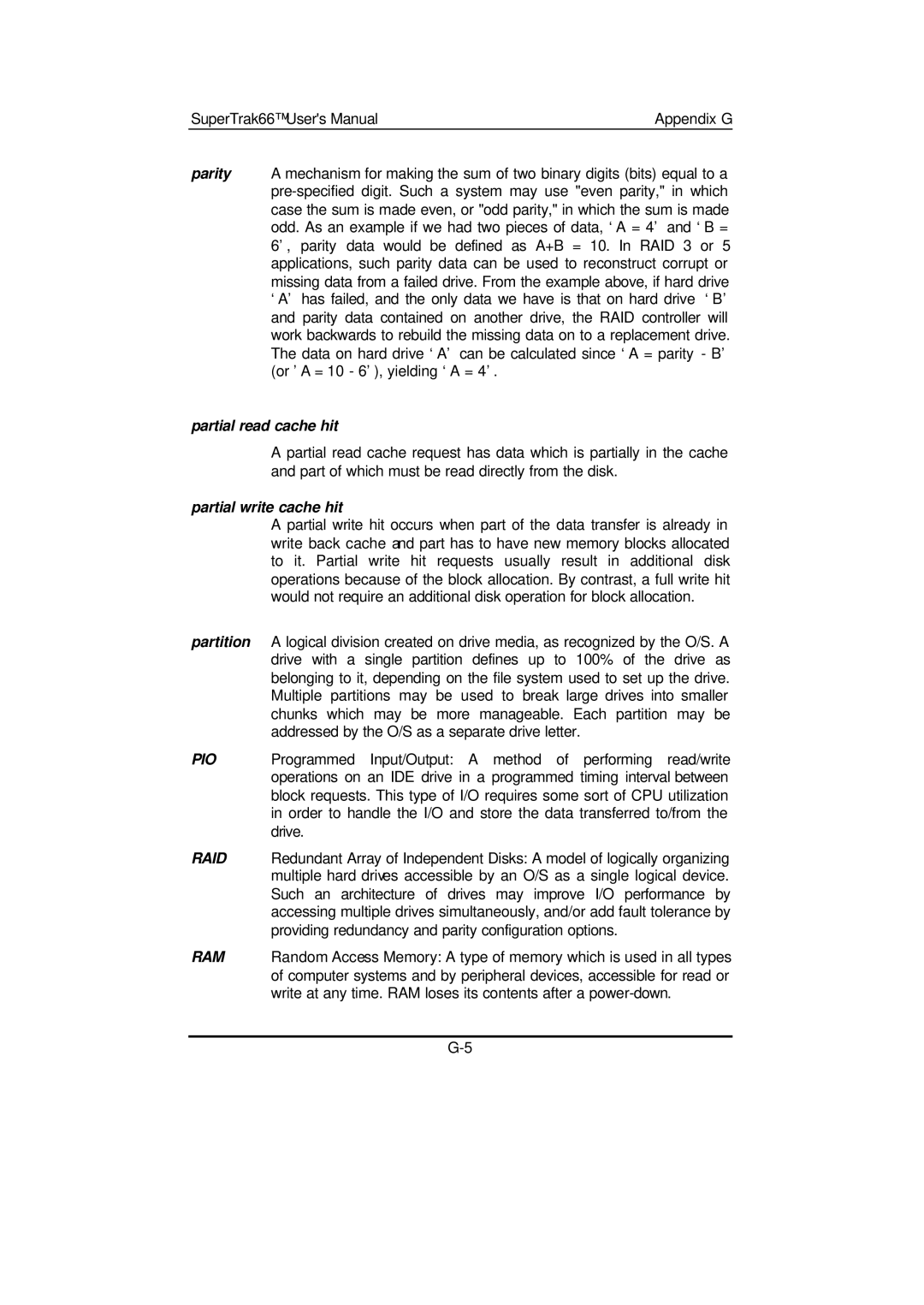SuperTrak66™ User's Manual | Appendix G |
parity A mechanism for making the sum of two binary digits (bits) equal to a
partial read cache hit
A partial read cache request has data which is partially in the cache and part of which must be read directly from the disk.
partial write cache hit
A partial write hit occurs when part of the data transfer is already in write back cache and part has to have new memory blocks allocated to it. Partial write hit requests usually result in additional disk operations because of the block allocation. By contrast, a full write hit would not require an additional disk operation for block allocation.
partition A logical division created on drive media, as recognized by the O/S. A drive with a single partition defines up to 100% of the drive as belonging to it, depending on the file system used to set up the drive. Multiple partitions may be used to break large drives into smaller chunks which may be more manageable. Each partition may be addressed by the O/S as a separate drive letter.
PIO Programmed Input/Output: A method of performing read/write operations on an IDE drive in a programmed timing interval between block requests. This type of I/O requires some sort of CPU utilization in order to handle the I/O and store the data transferred to/from the drive.
RAID Redundant Array of Independent Disks: A model of logically organizing multiple hard drives accessible by an O/S as a single logical device. Such an architecture of drives may improve I/O performance by accessing multiple drives simultaneously, and/or add fault tolerance by providing redundancy and parity configuration options.
RAM Random Access Memory: A type of memory which is used in all types of computer systems and by peripheral devices, accessible for read or write at any time. RAM loses its contents after a
